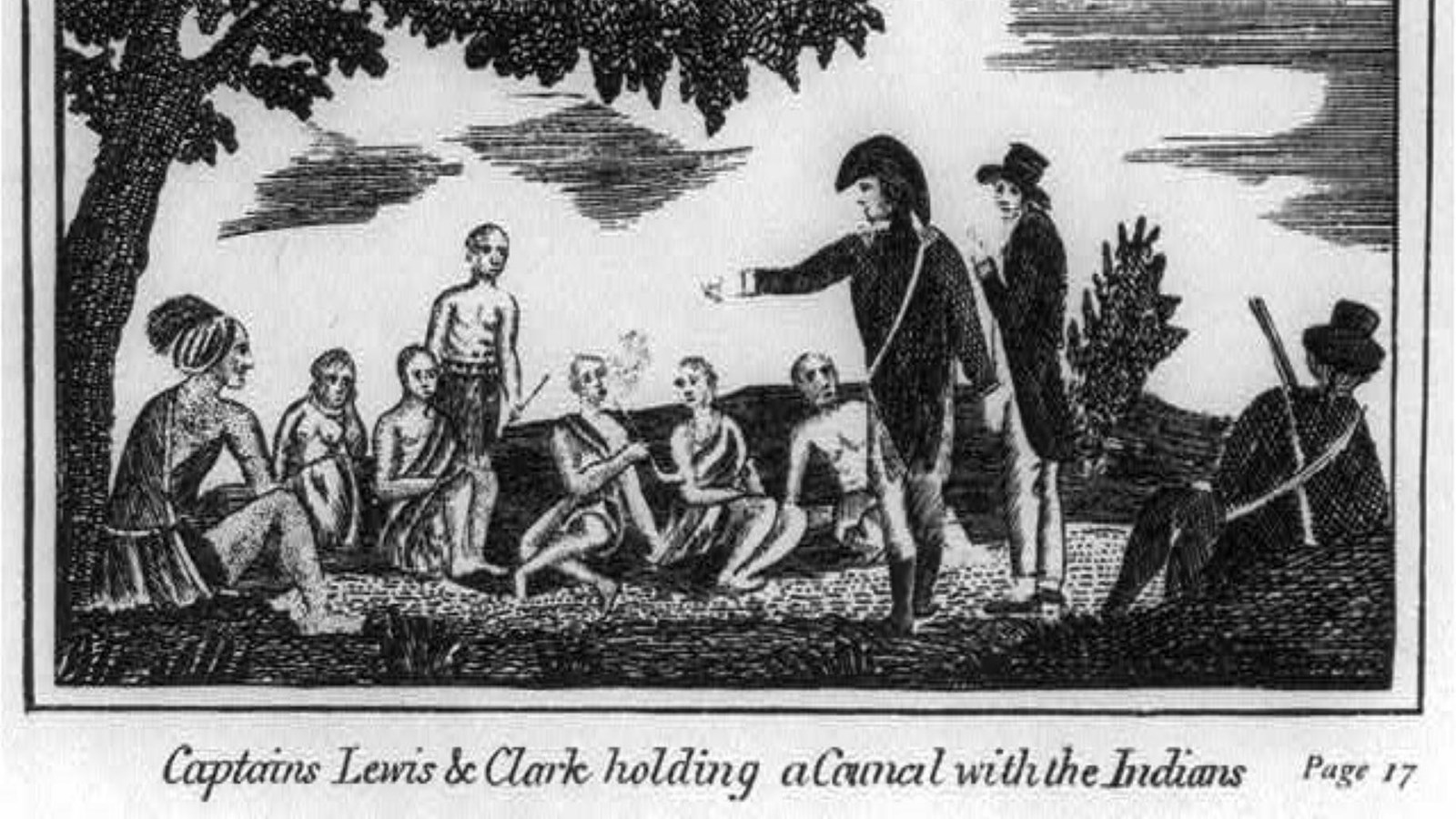Last updated: December 13, 2023
Place
First Council

Library of Congress
Benches/Seating, Historical/Interpretive Information/Exhibits, Parking - Auto, Picnic Table, Restroom - Seasonal, Scenic View/Photo Spot, Trailhead, Wheelchair Accessible
President Thomas Jefferson instructed Meriwether Lewis and William Clark to learn as much as they could about the Indigenous people they encountered. Such knowledge was necessary so that the American representatives could establish a precedent that all occupants of the Louisiana Territory were under the rule of the United States. The captains gave medals with Jefferson’s likeness on them to Indigenous leaders they met, to establish that new colonial relationship.
While out hunting on July 28, George Drouillard met a Missouria man named Op-Po-Hom-Mon-Ne (Buck Elk Walking). He told Drouillard of a nearby village but said the majority of its residents were out hunting bison, including its leaders, We ‘ar ruge nor (Little Thief) of the Otoe and Chon ga ton ga (Big Horse) of the Missouria.
When Drouillard relayed this to Lewis and Clark, they sent La Liberté, a French engagé who spoke the Otoe language, with Buck Elk Walking to invite Missouria and Otoe leaders to a council.
At sunset on August 2, a group of twelve Missouria and Otoe people arrived at the expedition’s camp. Among them was Big Horse, who had returned from the bison hunt. The formal council began on August 3. Lewis and Clark had ordered a makeshift pavilion set up on a tall bluff rising seventy feet above the Missouri River. From the top, they “observed the most butifull prospects imagionable.” They saw expanses of grassy prairie, groves of cottonwood in the bottomlands, and the river meandering through it all. From this vantage, the two delegations exchanged speeches. Lewis informed their guests of the transfer of land—their land?!—from France to the United States. He explained the “wishes of our government to Cultivate friendship & good understanding.” He gave the leaders of the delegation peace medals and invited them to send envoys to Washington, DC.
The historical record provides few clues to what Big Horse and the other Missouri and Otoe leaders may have thought about the meeting. They had held many diplomatic meetings with people of European descent before. Lewis and Clark’s grandiose language of U.S. sovereignty might have seemed like just a shift in trading partners, as had happened many times before among the White people. And so, Big Horse and the others “made Some verry Sensable Speeches,” were kind to their guests, and then moved on with their lives.
About this article: This article is part of series called “Pivotal Places: Stories from the Lewis and Clark National Historic Trail.”
Lewis and Clark NHT Visitor Centers and Museums
This map shows a range of features associated with the Lewis and Clark National Historic Trail, which commemorates the 1803-1806 Lewis and Clark Expedition. The trail spans a large portion of the North American continent, from the Ohio River in Pittsburgh, Pennsylvania, to the mouth of the Columbia River in Oregon. The trail is comprised of the historic route of the Lewis and Clark Expedition, an auto tour route, high potential historic sites (shown in black), visitor centers (shown in orange), and pivotal places (shown in green). These features can be selected on the map to reveal additional information. Also shown is a base map displaying state boundaries, cities, rivers, and highways. The map conveys how a significant area of the North American continent was traversed by the Lewis and Clark Expedition and indicates the many places where visitors can learn about their journey and experience the landscape through which they traveled.
